Battle of The CPU Stock Coolers! 7x Intel vs 5x AMD, plus an EVO 212
by E. Fylladitakis on July 22, 2016 9:00 AM EST- Posted in
- Cases/Cooling/PSUs
- CPUs
- AMD
- Intel
- Cooler Master
- Cooler
The AMD Coolers
Five AMD-specific coolers are going to be tested in this review, four being stock coolers that accompany AMD’s CPUs and one being a cost-effective cooler from Cooler Master.
| Vendor | Cooler | Common Bundle | Core | Fins | Fan (mm) |
Mass (g) |
| AMD | 1A213LQ00 | AMD “Kabini” AM1 | Alu | Alu | 50 | 75 |
| FHSA7015B | Several AMD Lines | Alu | Alu | 70 | 164 | |
| AV-Z7UB408003 | Black Edition Phenom | Alu +2 Cu HP |
Alu | 70 | 374 | |
| Wraith (125W) | AMD FX-8370 AMD A10-7890K |
Cu +4 Cu HP |
Alu | 90 | 304 | |
| Cooler Master / AMD | HK8-00005 | AMD FM2+ “Godavari” | Alu | Alu | 70 | 125 |
The first AMD cooler that we are having a look at is the 1A213LQ00 that accompanies AM1 “Kabini” core CPUs. It is by far the smallest heatsink of this review and of very simple design, with a full aluminum body, a tiny circular base and a small 50 mm fan. As a matter of fact, it is so small that it can be easily mistaken for a motherboard’s chipset cooler. Kabini CPUs however have very low power ratings, which makes this small cooler more than enough for them.
AMD’s FHSA7015B is perhaps the most widely used stock CPU cooler in existence, as the company has been supplying it alongside with tens of CPUs across nine different platforms (FM1, AM3+, AM3, AM2+, AM2, 1207, 940, 939 and 754 sockets). It is a rather simple design entirely made out of aluminum, with a square base and straight fins extending to all four sides of the cooler.
Cooler Master’s HK8-00005 is actually the stock cooler supplied with AMD’s high end “Godavari” FM2+ CPUs. It can be bought as an aftermarket cooler for just $14 and should fit all of AMD’s sockets/CPUs since socket 754. It is a relatively small cooler, about the same size as the FHSA7015B, using a similar 70 mm fan, with an aluminum base and fins. The main difference is that there are two heatpipes running across the base of the cooler, transferring thermal energy from the core directly to the edges of the fins.
The AMD AV-Z7UB408003 was perhaps the first “advanced” cooler that came supplied alongside a CPU. It was first seen supplied as the stock CPU of AMD’s Phenom X4 9600 processors back in 2008 and can still fit on the latest FM2+ processors. It has large aluminum fins attached to a solid copper base. Four heatpipes run through the copper base, transferring thermal energy directly up to the center and edges of the fins. The short fan is embedded inside the fins in order to reduce the overall height of the cooler.
The AMD FX-8370 “Piledriver” processors come with the first stock cooler that has been baptized with a nickname rather than a series of digits and letters - the Wraith. AMD’s Wraith cooler looks almost identical to the AV-Z7UB408003, and its core design is, but everything is larger. The Wraith has larger fins and thicker heatpipes, with a full size 90 mm fan mounted on top of the cooler. At least for the metal part of the cooler, it almost looks as if someone took the AV-Z7UB408003’s schematic and simply pressed the “scale” button, increasing everything by about 25%. Despite the increase in size, the fins are not as dense and the copper base is a little thinner, resulting to a reduction in raw mass. Although the core design may be the same, the significantly superior fan should significantly improve the performance of the Wraith over that of the AV-Z7UB408003 that it is based upon.


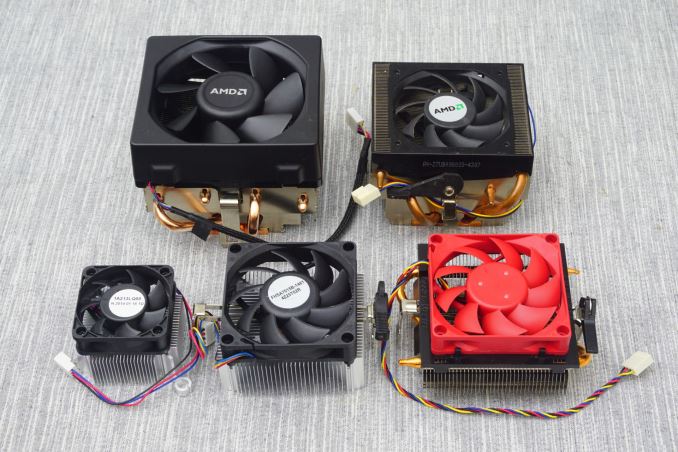
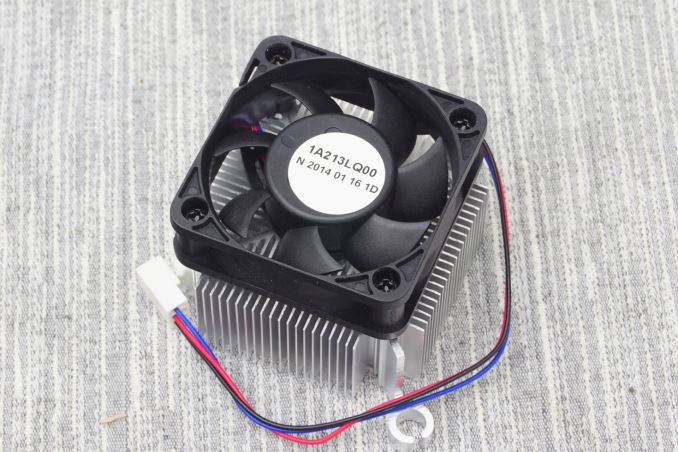
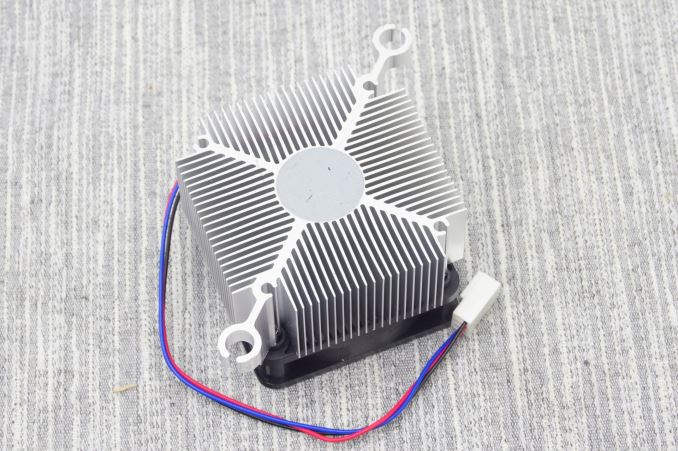
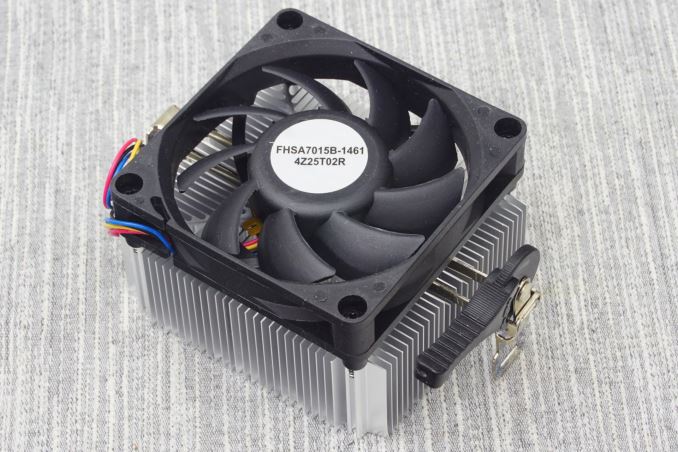
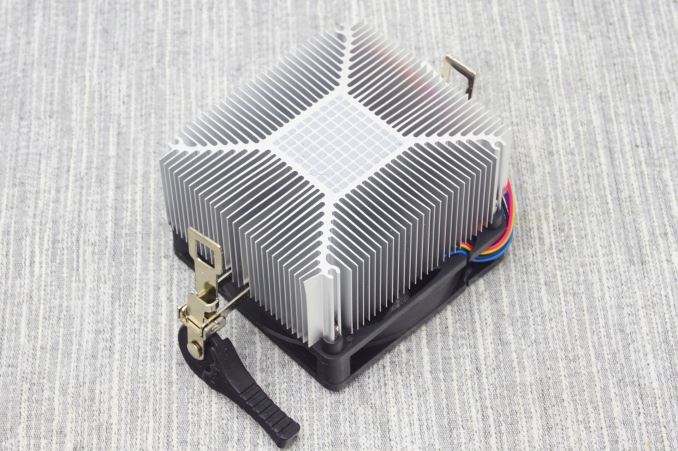
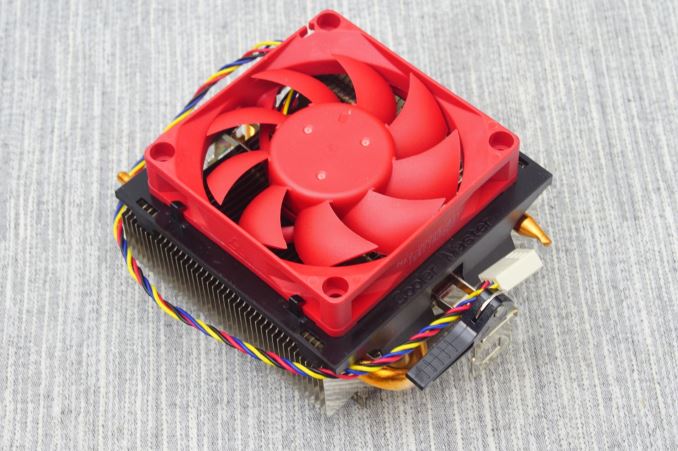
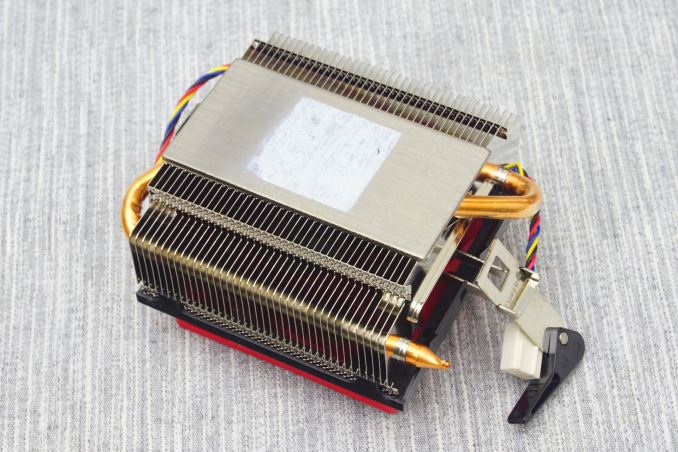
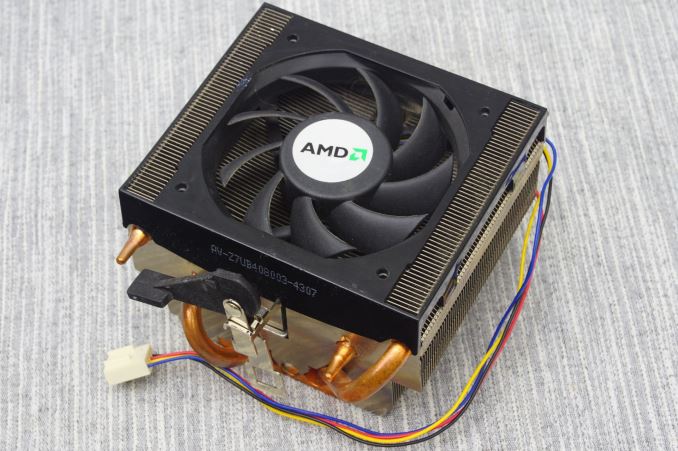
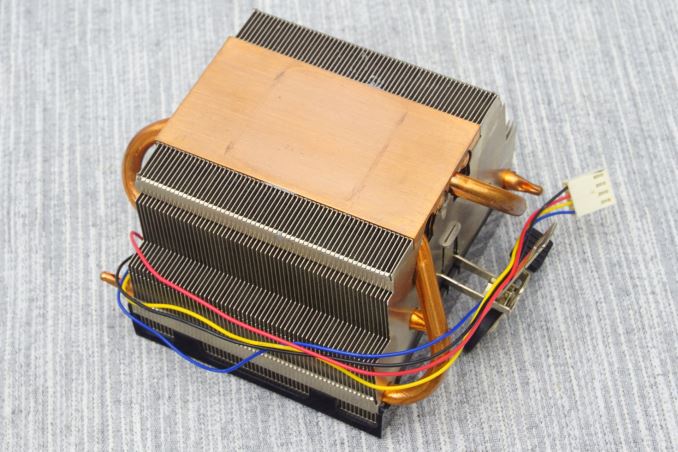

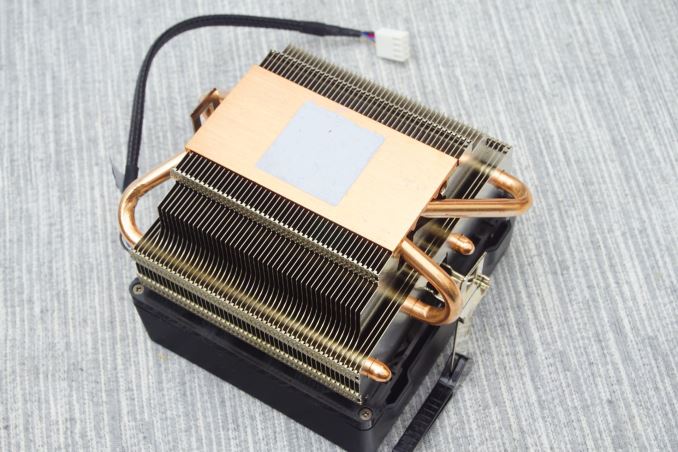








82 Comments
View All Comments
mikato - Thursday, July 28, 2016 - link
Is it noisy?yannigr2 - Friday, July 22, 2016 - link
AMD should start selling Wraith for $20. If they can make an Intel version, that would have been hilarious. An Intel CPU with a cooler on top of it having the AMD logo.silverblue - Friday, July 22, 2016 - link
It might make sense to re-test the Wraith without its shroud to see if it measures up to AMD's claims.Yuriman - Friday, July 22, 2016 - link
I'd personally find it a lot more useful if there were some charts showing temperatures with the coolers normalized for acoustic performance, or showing noise while normalized for core temperature or thermal resistance. It's not very useful to know that cooler A is both quieter and performs worse than cooler B when both are at 7v, because they're all PWM and will be targeting a temperature range, rather than running at a fixed fan speed.mikato - Thursday, July 28, 2016 - link
I agree. Noise is more important to me than this article made it.Einy0 - Friday, July 22, 2016 - link
Nice to see the EVO 212 is much better than most stock coolers. I have one on both my home PCs and my work PC. Glad to see the $30 investment is worth it... The wraith is sick, too bad AMD still doesn't have a nice cpu to put under it! I can't wait for Zen, I'm so sick of giving all my cpu money to Intel.Peichen - Monday, July 25, 2016 - link
Why sick of giving Intel your money? Are you not satisfied with the performance you paid for? Are you CPUs dying young?mikato - Thursday, July 28, 2016 - link
Maybe because he/she has the feeling that Intel is charging more for a given item than they would otherwise be if they had better competition, and he/she does not like paying more than may be normally justified.nismotigerwvu - Friday, July 22, 2016 - link
Very cool! It's nice to have a quantifiable value for the improvement an aftermarket cooler can provide. My only nitpick would be to see if a push/pull setup on the 212 was worthwhile. On my system it seems to be a bit quieter since I can keep the fans at a lower RPM, but it could also just be a placebo.Voldenuit - Friday, July 22, 2016 - link
My old Opteron 165 (Toledo?) came with a heatpipe cooler, so that definitely predates the AV-Z7UB408003 cooler that came with the Phenom X4.